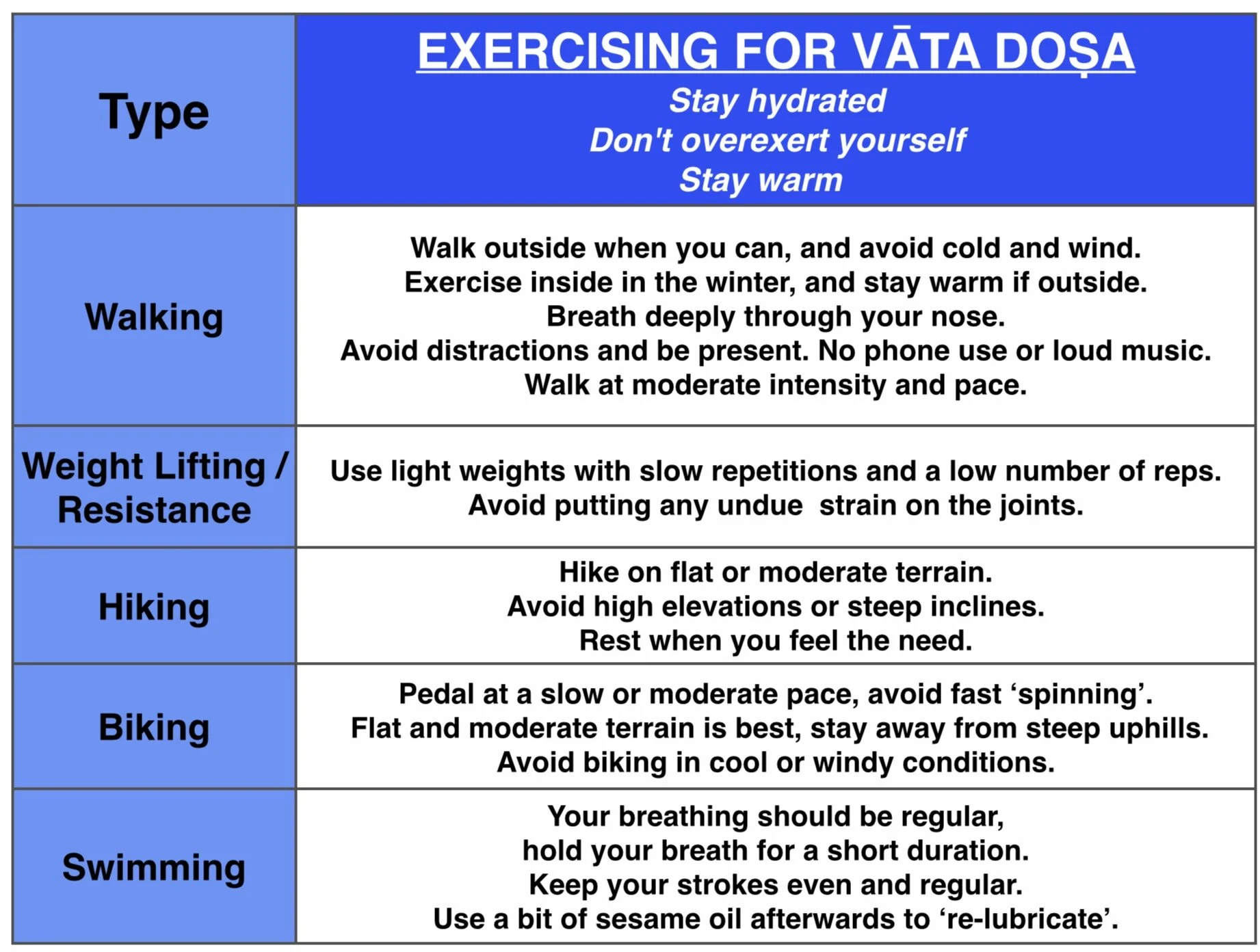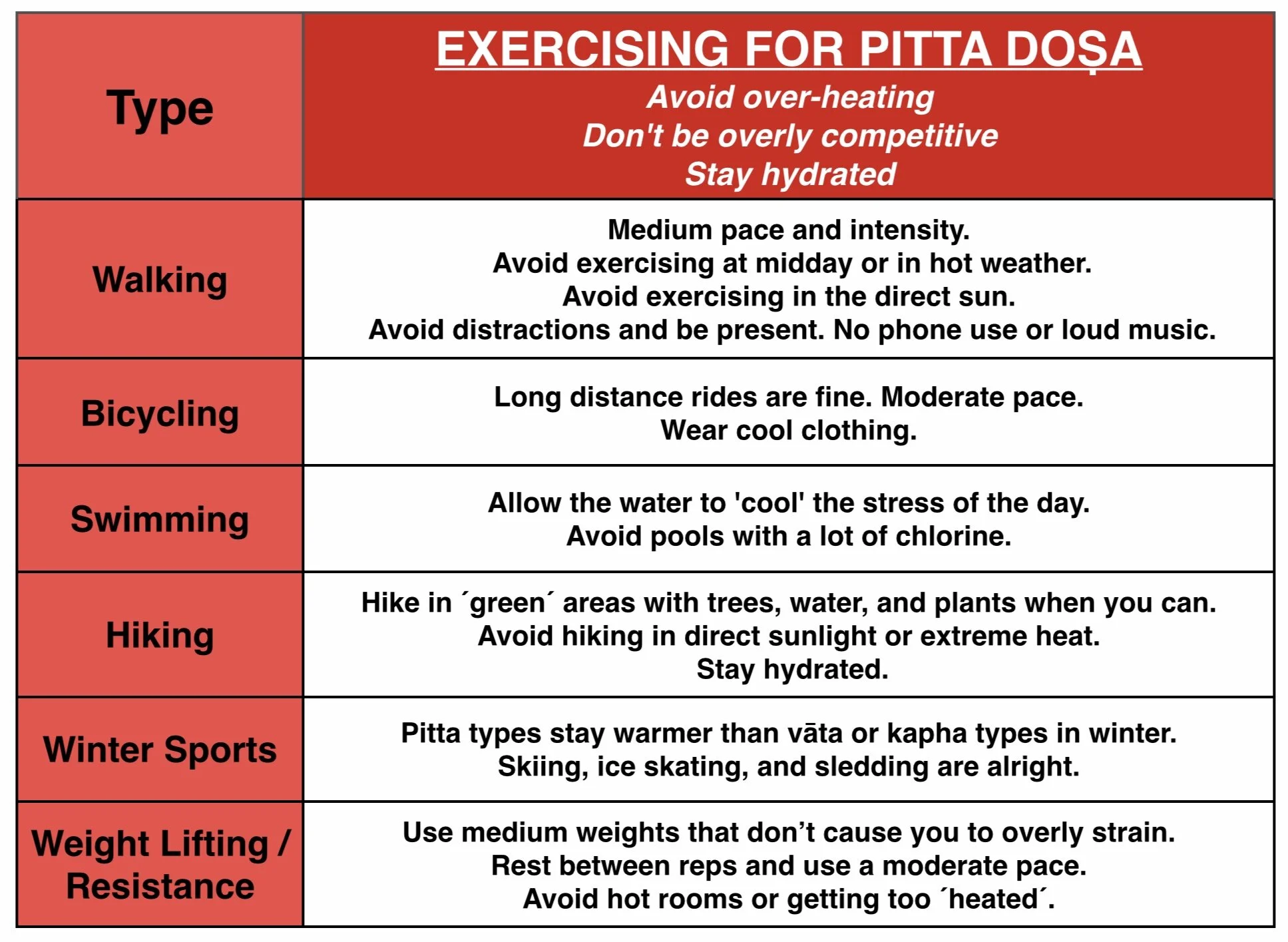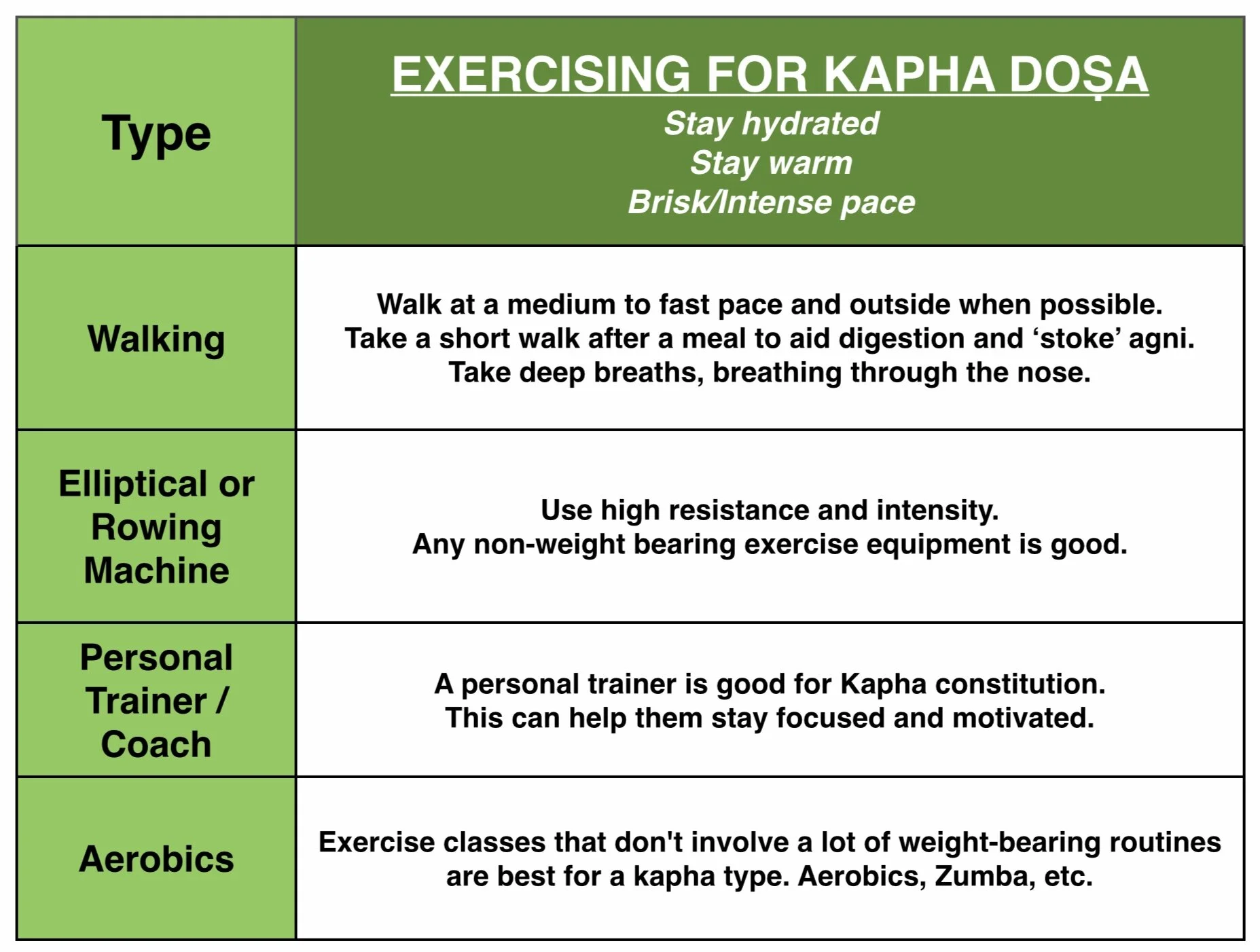Āyurveda recognizes that each of us is an individual with our own combination of doshic traits and influences: our constitution. Because of this, how we choose to exercise or practice the sister art of Yoga is best served by tailoring each of these activities accordingly. Living in step with our own 'mix' of Vāta, Pitta, and Kapha will aid greattly in achieving a state of wellness and health.
Here are some general guidelines that can help you determine how to outline an exercise regimen and Yoga practice. Remember, an Āyurvedic practitioner can be of great assistance in helping you stay in step with your 'natural self' and should be consulted when you are looking to learn more.
Below is an example of a Vāta Balancing Sequence:
Pāvanamuktāsana (wind-releasing) - Sukhāsana (easy) - Surya Namaskāra (sun salutation) - cool-down walk - Uttānāsana (standing forward bend) - Vrksāsana (tree) - Utthita Trikonāsana (extended triangle) - Vidalāsana (cat-cow) - Vajrāsana (thunderbolt) - Supta Vajrāsana (knee to chest) - Supta Pādāngusthāsana (reclining hand to toe) - Bhujangāsana (cobra) - Shashank Mudra (rabbit) - Viparita Karani (inverted) - Yoga Mudra (yogic seal) - short rest - Nādī Śodana Prānāyāma (alternate nostril) ten rounds - Meditation seated in Siddhāsana (accomplished) - So-Hum Meditation - Śavāsana (corpse)
Below is an example of a Pitta Balancing Sequence:
Chandra Namaskāra (moon salutation) - cool-down walk - Utthita Trikonāsana (extended triangle) - Parivrtta Trikonāsana (revolved triangle) - Setu Bandha Sarvāngāsana (half bridge) - Ardha Matsyendrāsana (half spinal twist) - Ardha Navāsana (half boat) - Paripūrna Navāsana (full boat) - Śalabhāsana (locust) - Dhanurāsana (bow) - Ustrāsana (camel) - Shashank Mudra (rabbit) - Sālamba Sarvāṅgāsana (shoulderstand) - Matsyāsana (fish) - Crocodile Twist - Jānu Śirssāsana (head to knee) - short rest - Śītalī Prānāyāma (cooling breath) Left-Nostril Breathing 12 times - Meditation seated in Virasana (hero) - So-Hum Meditation with inhalation rising up the front of the spine recommended, Śavāsana (corpse).
Below is an example of a Kapha Balancing Sequence
Surya Namaskāra (sun salutation) - Tadāsana (Mountain), Virabhadrāsana I (Warrior 1), Virabhadrāsana 2 (Warrior 2) - Prasārita Pādottānāsana (expanded spread foot) - Adho Mukha Śvānāsana (downward-facing dog) - Ardha Matsyendrāsana (half spinal twist) - Pūrvottanāsana (eastward stretching) - Gomukhāsana (cow's face) - Bharadvājāsana (seated twist) - Simhāsana (lion) - Jat़hara Parivartanāsana (stomach rolling) - Halāsana (plow) - Matsyāsana (fish) - short rest - Bhastrika Prānāyāma (bellows breath) or Right Nostril Breathing (12 times) - Meditation seated in Vajrāsana (thunderbolt) Empty Bowl recommended - Śavāsana (corpse)
Tai Chi is an excellent tridoshic activity.
The enjoyment of being out in Nature.















